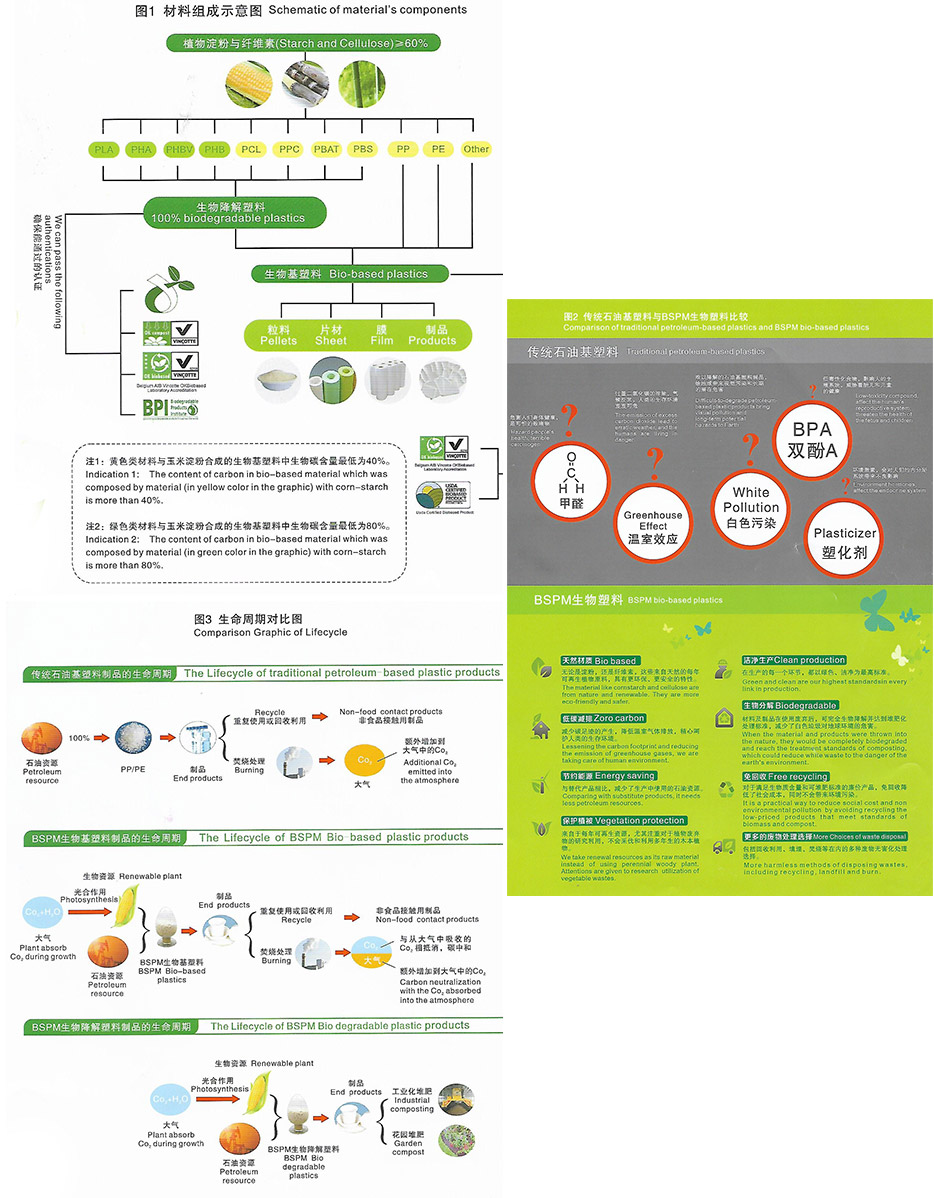1. Good mechanical properties
PLA has good mechanical and physical properties, moisture resistance, grease resistance and good tightness.With good tensile strength and ductility, it can also be used in various of common processing methods.
2. Completely degradable
Most importantly, PLA has good biodegradability. PLA can be completely degraded by microorganisms in nature under specific conditions and eventually generate carbon dioxide and water without polluting the environment, which is very beneficial to environmental protection and is recognized as an environment-friendly material.
3. Good gloss and transparency;The use of polystyrene film is comparable to that of other biodegradable products that cannot be provided.
4. PLA film is the only biodegradable plastic with excellent antibacterial and antifungal properties.
5. PLA performance is stable at room temperature, the temperature is higher than 55 ℃ or oxygen enrichment and automatically under the effect of microorganism decomposition, the resulting carbon dioxide and water. Do not pollute the environment.
6.PLA also has the disadvantages of poor impact resistance and easy hydrolysis.
PLA can be synthesized in three ways: direct condensation polymerization, open-loop polymerization and solid polymerization.
1. Direct condensation
The main characteristics are that the synthetic polylactic acid can contain no catalyst, the polymerization process is short, easy to decompose and small molecular weight, but the reaction conditions are relatively harsh, the requirements for the polymerization monomer and the requirements for ordinary polylactide monomer, the resulting polylactic acid product performance is poor, small practical value.
2. Open loop polymerization
Because it is an open-loop polymerization of ring dimer, unlike ordinary condensation polymerization, there is no small molecule water generation, and the polymerization equipment is simple.The polylactic acid obtained by this method has high molecular weight and high mechanical strength.
3. Solid assembly method
In this method, the low-molecular weight resin obtained by direct polymerization is polymerized under the conditions of vacuum reduction and temperature tg-tm to improve the degree of polymerization and molecular weight, so as to improve the strength and processing properties of the material.
PLA is a fully biodegradable material, It has been paid more and more attention by people and has a great market application prospect in the future.Imagine, there is no longer a mountain of white garbage on the earth, plastic has been put to the ground, what is better than this?

